The Best Cycling Documentaries to Watch in 2025
Cycling documentaries provide a unique backstage pass into the sport, revealing the guarded moments and human stories behind the riders. These films transport viewers from spectators to insiders, capturing the raw emotions and drama that unfold in the world of professional cycling.

Ever wondered what riders say to each other in the bunch when the race explodes? Or how it feels inside the team car when everything's on the line? Cycling documentaries unlock the doors that most fans never get to walk through. They're your backstage pass to the sport's most guarded moments, the tension before a mountain stage, the raw emotion after a career-defining victory, the human stories behind those lycra-clad warriors flying past at 50kph.
If you're craving that authentic cycling fix, Tour de France: Unchained delivers unprecedented access to the world's greatest bike race. You'll witness conversations that happen beyond the barriers, feel the pressure inside team buses, and experience the drama that unfolds when everything matters.
Finding quality cycling content has become increasingly challenging, particularly in the US, where services like GCN+ disappeared more than a year ago. While the best cycling documentaries on Netflix and Amazon Prime offer incredible access to the sport's greatest moments, subscribing to all necessary streaming platforms could cost you nearly $450 annually (plus tax) for the complete cycling experience.
From the behind-the-scenes brilliance of Tour de France: Unchained covering the 109th edition of Le Tour to documentaries like "A Sunday in Hell" capturing the 1976 Paris-Roubaix, these cycling films transport you from spectator to insider. Some movies, like Tour de Pharmacy, even feature Hollywood stars such as Orlando Bloom and Kevin Bacon in cycling-themed mockumentaries, while others, like Icarus, start as investigations into amateur cycling before revealing much larger stories.
Ready to discover what happens when the cameras keep rolling after the podium ceremony? Let's explore some of the best cycling films and documentaries featuring cyclists available today.
Mark Cavendish: Never Enough
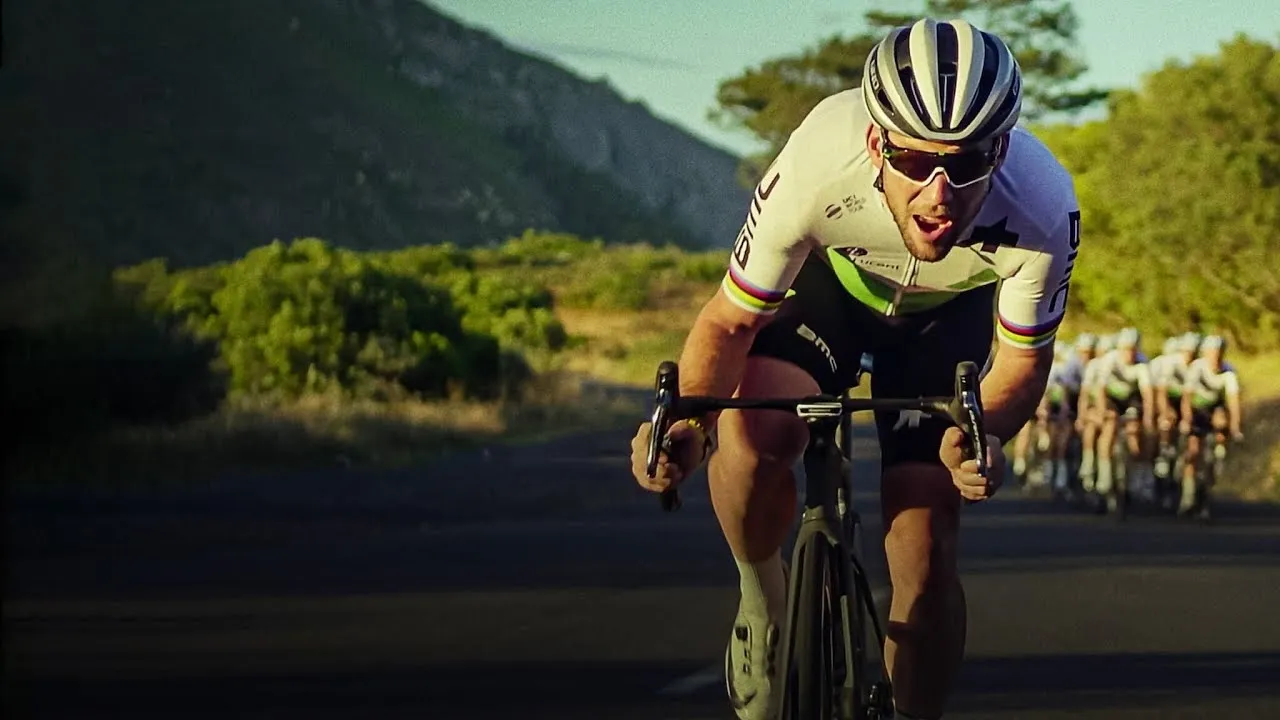
Image Source: YouTube
You know that moment when a cycling legend faces their greatest battle—not against competitors, but against their own body?
Released on Netflix in August 2023, Mark Cavendish: Never Enough chronicles one of cycling's most extraordinary comeback stories. This 92-minute Netflix cycling documentary, directed by Alex Kiehl, follows the British cycling legend through the meteoric highs and devastating lows of his career.
Overview of Mark Cavendish: Never Enough
The documentary captures the period from 2016 to 2021, a tumultuous five-year span when Cavendish went from peak performance to career-threatening illness. After establishing himself as one of cycling's greatest sprinters, Cavendish faced a devastating diagnosis of Epstein-Barr virus, leading to chronic fatigue—a crushing blow for an elite athlete.
What makes this cycling show special is the exclusive access to Cavendish, his wife Peta, teammates, and coaches who witnessed his journey firsthand. You're not just watching from the sidelines—you're living through every triumph and setback alongside the man they call the Manx Missile.
Why Mark Cavendish: Never Enough is a must-watch
Even those unfamiliar with professional cycling will find this documentary on cycling compelling. The film masterfully captures Cavendish's emotional battle against not only physical limitations but also clinical depression. The documentary explains the sport and Tour de France mechanics enough for newcomers to understand the stakes.
The narrative arc—from his career peak to his lowest moments and eventual redemption—creates an authentic sports comeback story worthy of fiction. This isn't just about cycling. It's about resilience.
Where to watch Mark Cavendish: Never Enough
Currently, the documentary is available exclusively on Netflix, including Netflix Standard with Ads. The film offers audio options in multiple languages, including German, English, Spanish, French, and Italian. Subtitles are available in English, Spanish, French, and both Simplified and Traditional Chinese.
Mark Cavendish: Never Enough highlights
The documentary's most powerful moments come from witnessing Cavendish's transformation—not just as an athlete but as a person. His pursuit of Eddy Merckx's record of 34 Tour de France stage wins forms the competitive backbone of the story.
The film features stunning race footage balanced with intimate interviews. The documentary doesn't shy away from showing Cavendish at his lowest points, making his eventual comeback all the more impressive. Through this journey, you'll discover how Cavendish learned that external validation could never compensate for internal struggles.
What will stay with you long after the credits roll? The raw honesty of a champion learning that sometimes the greatest victories happen off the bike.
Tour de France: Unchained
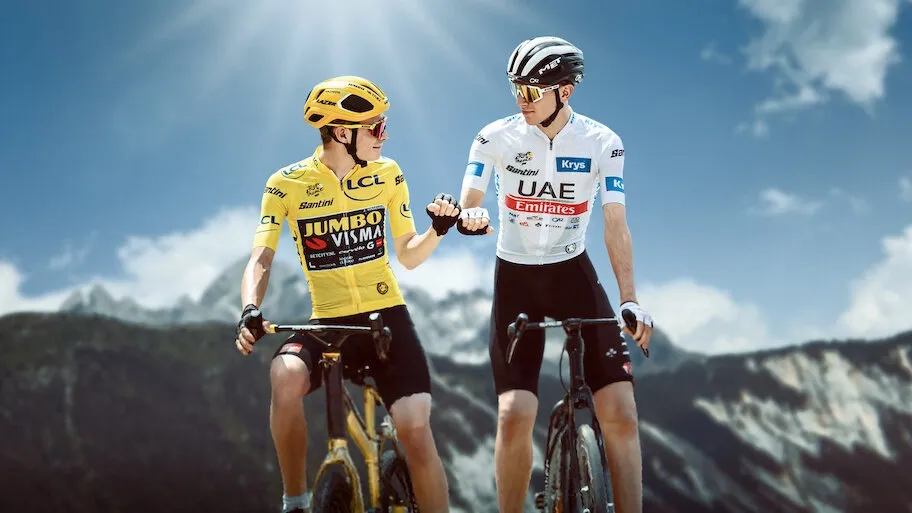
Image Source: Netflix
You know that moment when attacks start flying on a mountain stage and everything changes in seconds? Tour de France: Unchained gets you inside those crucial moments that decide races.
Tour de France: Unchained delivers what no other cycling show has managed—multi-season access to the peloton's inner workings. The third and final season, released on July 2, 2025, covers the dramatic 2024 edition through eight compelling episodes.
What makes Tour de France: Unchained special
Produced by the same team behind the successful "Formula 1: Drive to Survive," this pro cycling documentary series weaves together television race footage, on-bike videos, team car conversations, and rider interviews to create a concentrated look at the Tour de France. Each episode runs approximately 40 minutes, with the entire series rated an impressive 8.2/10 on IMDb.
The third season features several elite teams, including UAE Team Emirates, Visma-Lease a Bike, and Soudal-QuickStep, following their triumphs and struggles throughout the three-week race.
Why cycling fans can't get enough
The series expertly balances appealing to both dedicated cycling enthusiasts and newcomers to the sport. For those unfamiliar with professional cycling, the series breaks down complex tactics and traditions into digestible segments. Despite occasionally simplifying the sport for wider audiences, the documentary captures genuine emotion, team tension, and the raw challenges riders face.
What sets this apart from race broadcasts? Access to moments that happen when the cameras usually stop rolling. Team meetings at midnight. The silence before crucial attacks. Riders breaking down after missing their shot at glory.
Where to watch Tour de France: Unchained
All three seasons are available exclusively on Netflix, with subscription options starting at various price points depending on your region.
Tour de France: Unchained highlights
Season three prominently features:
- Tadej Pogačar's dominant performance in the 2024 Tour
- Mark Cavendish's historic 35th stage win, breaking Eddy Merckx's long-standing record
- The David vs. Goliath struggle between well-funded teams and those operating on smaller budgets
- Individual stories of triumph and heartbreak across different race categories: sprinters, climbers, and overall contenders
Unfortunately, Netflix has confirmed this third season will be the last, making it the final chapter in this groundbreaking cycling series.
Movistar Cycling Documentary
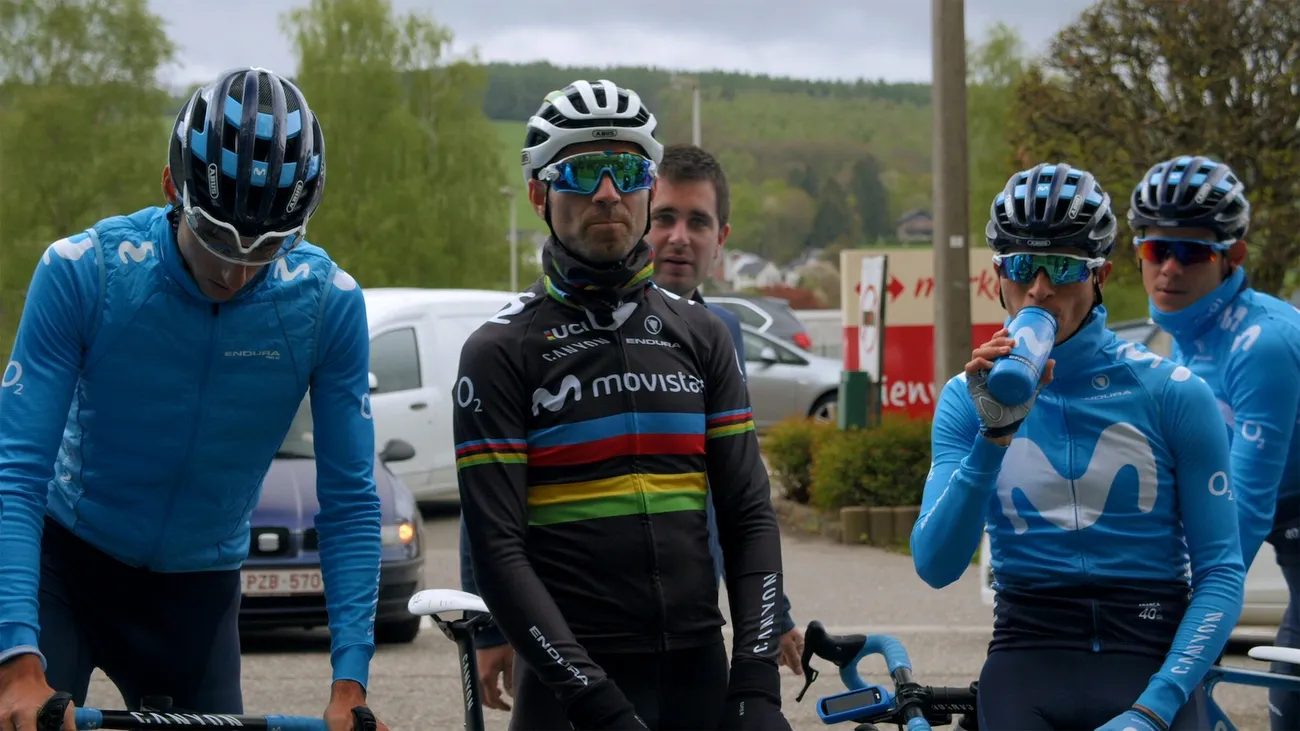
Image Source: Netflix
You know those polished team presentations where everyone smiles and talks about unity? "The Least Expected Day" rips away that facade completely.
This Spanish-language series (original title: "El Día Menos Pensado") delivers the most unfiltered look at professional cycling's internal battles you'll ever witness. Forget the sanitised press conferences—this is what really happens when the cameras keep rolling inside cycling's longest-standing team.
Overview of Movistar Cycling Documentary
This six-episode documentary series, produced by Telefónica Broadcast Services, initially premiered on March 27, 2020. The first season follows Movistar Team throughout their 2019 UCI World Tour campaign, with subsequent seasons covering the 2020 and 2021 racing calendars. Each season runs approximately three hours in total length, filmed across eight months in various European and Latin American locations—from team headquarters in Pamplona to Ecuador's northern Carchi province.
Why Movistar Cycling Documentary is a must-watch
What happens when three Grand Tour contenders share the same jersey? Civil war.
The documentary captures real-time tensions between co-leaders Nairo Quintana, Mikel Landa, and Alejandro Valverde. Team members openly admit to "communication issues," "tensions," and even a "civil war" within the team. This isn't manufactured drama—it's the raw reality of professional cycling's psychological complexities.
The series has earned a solid 7.4/10 IMDb rating, praised for bringing a human dimension to professional cycling that traditional race coverage often misses. You'll witness the exact moments when team tactics implode and personal ambitions clash with collective goals.
Where to watch the Movistar Cycling Documentary
All three seasons are available globally on Netflix under the title "The Least Expected Day: Inside the Movistar Team". The series is primarily in Spanish with English subtitles available. Netflix offers various subscription plans ranging from $7.99/month (Standard with ads) to $23.99/month (Premium).
Movistar Cycling Documentary highlights
The series captures cycling's most explosive moments:
- Richard Carapaz's overall victory in the 2019 Giro d'Italia—the team's 15th Grand Tour win
- The power struggle between Quintana and Landa during the 2019 Tour de France
- Alejandro Valverde's emotional journey in the rainbow jersey
- Marc Soler's controversial decision to defy team orders during the Vuelta a España
- The women's team coverage in later seasons, featuring Annemiek van Vleuten's remarkable performances
This documentary proves that sometimes the most compelling racing happens inside the team bus, not on the road.
Sean Conway: Europe or Bust
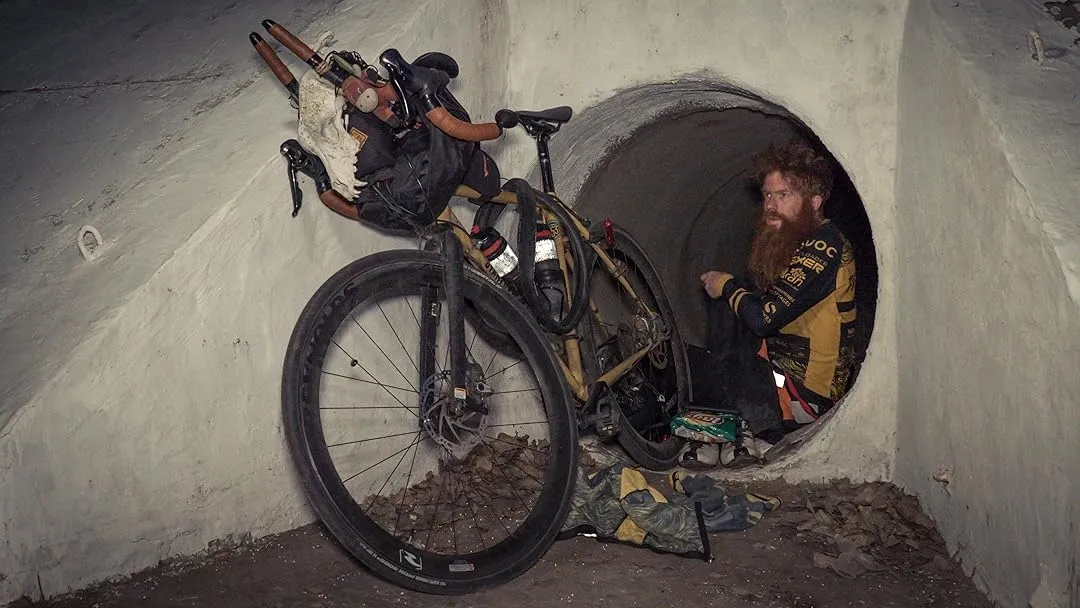
Image Source: Amazon.com
You know that moment when your legs are screaming, your mind's playing tricks, and there's still 2,000 miles to go? Welcome to Sean Conway's world.
Sean Conway: Europe or Bust strips away the gloss to show you what extreme endurance cycling really feels like. This raw, unfiltered biking documentary captures Conway's second attempt at the fastest unsupported crossing of Europe by bicycle—a record that had haunted him for years.
What Sean Conway: Europe or Bust delivers
Released in 2020, this fly-on-the-wall documentary follows Conway's gruelling 3,980-mile route across nine countries from Portugal to Russia. After his first attempt crumbled in 2017 near the French Pyrenees due to injury, Conway returned with that familiar determination every cyclist knows—the kind that makes you get back on the bike even when everything hurts.
The film doesn't sugar-coat the reality. You'll witness Conway battling dangerous roads, relentless headwinds, sleep deprivation, and questionable nutrition as he pushes his body beyond what seems humanly possible.
Why this documentary hits different
This isn't your typical cycling documentary. Conway's experience feels raw and authentic—sleeping rough 19 out of 24 nights, showering just four times throughout the entire journey. The man maintained approximately 16 hours of daily cycling across multiple countries.
His commitment to travelling completely unsupported means carrying minimal equipment—he even cut off his toothbrush end to save weight. That's the kind of obsessive detail that separates real endurance athletes from weekend warriors.
Where to watch Sean Conway: Europe or Bust
The documentary is available on Amazon Prime Video, where you can either rent or buy it. Once rented, you have 30 days to start watching and 48 hours to finish after beginning.
Sean Conway: Europe or Bust highlights
Conway's successful world record achievement—completing the journey in 24 days, 18 hours, and 39 minutes, beating the previous record by 9 hours. But the real story lies in the details:
His quirky decision to pick up an animal skull in Portugal (named Pedro) that travelled with him to the finish line. The stark contrast between beautiful European landscapes and the mental battles Conway fights through sleep deprivation and physical pain.
The dramatic final push through Russia's long, straight, dangerous roads tested his mental endurance as much as his physical strength. You'll feel every pedal stroke of that suffering.
De Ronde 100
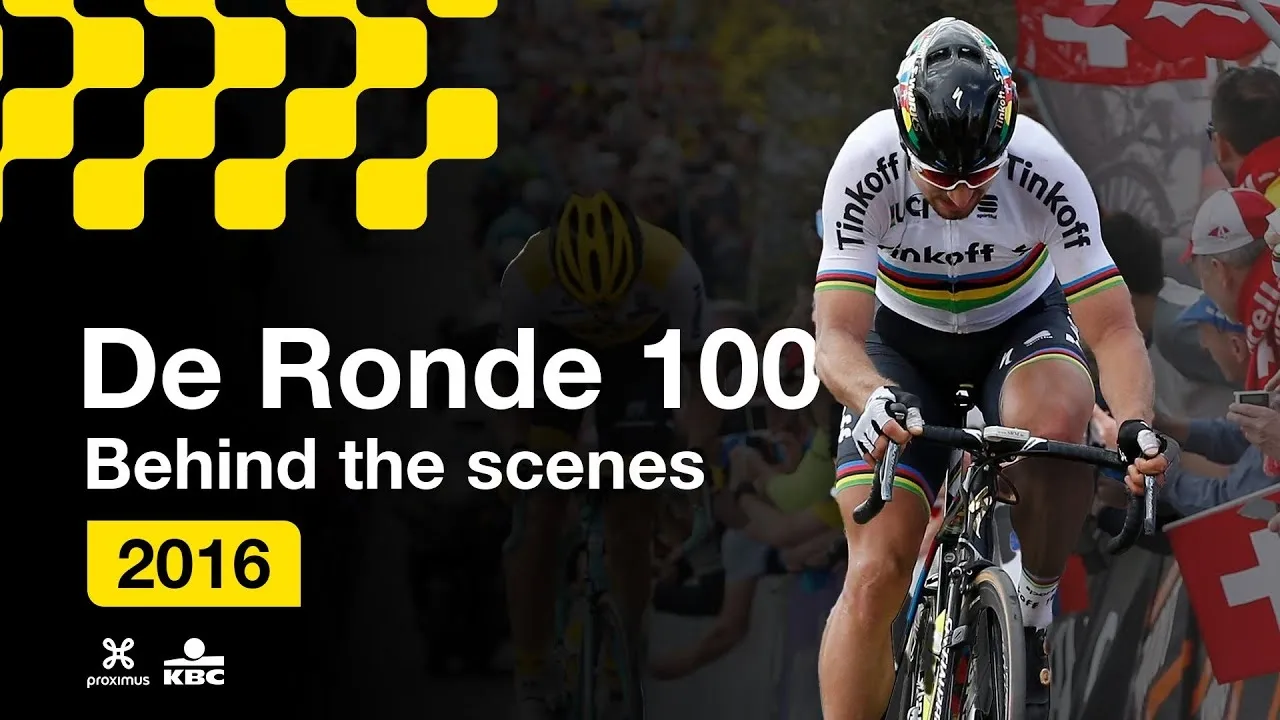
Image Source: 220 Triathlon
You know that feeling when cycling history unfolds before your eyes? The 100th Tour of Flanders wasn't just another Monument—it was a once-in-a-lifetime celebration of everything that makes Belgian cycling legendary.
De Ronde 100 captures this historic milestone through the eyes of those who made it happen. This Belgian production, directed by Koen Warlop and released in 2017, preserves a pivotal moment in cycling history through raw, unfiltered access.
Overview of De Ronde 100
Filmed primarily in Dutch, this road cycling documentary follows the 2016 Tour of Flanders across its gruelling 270 km course. Rather than merely showing race footage, the film reveals the unseen experiences of team directors, riders, and press throughout this monumental cycling event.
What makes this different? Creative use of dash cam footage puts you directly in the race convoy, witnessing the chaos and split-second decisions that traditional broadcasts miss. The documentary captures the collective excitement as Flemish and cycling communities united to celebrate this centennial milestone.
Why De Ronde 100 is a must-watch
Ever wondered what actually happens behind those team cars racing to catch up? This documentary delivers raw candour and an authentic portrayal of the massive organisational effort behind major races.
The film expertly conveys the palpable tension and urgency as team cars rush to assist cyclists and monitor race developments. It represents just one instalment in an ongoing documentary series, as subsequent years (101st through 104th editions) have received similar treatment.
Where to watch De Ronde 100
The documentary is currently available on YouTube, although availability may vary by region. This makes it one of the more accessible cycling documentaries YouTube has to offer.
De Ronde 100 highlights
The documentary features Peter Sagan's triumphant victory—his first Monument win after numerous near-misses. Sagan, then riding for Tinkoff, decisively broke away from Fabian Cancellara and Sep Vanmarcke after 225 kilometres.
Especially remarkable was Vanmarcke's performance, as he managed to bridge to the front despite suffering three crashes early in the race. Throughout the film, viewers experience both the electrifying atmosphere along the route and the intense behind-the-scenes preparations that made this centennial celebration truly special.
What will your Monument moment be?
Lance
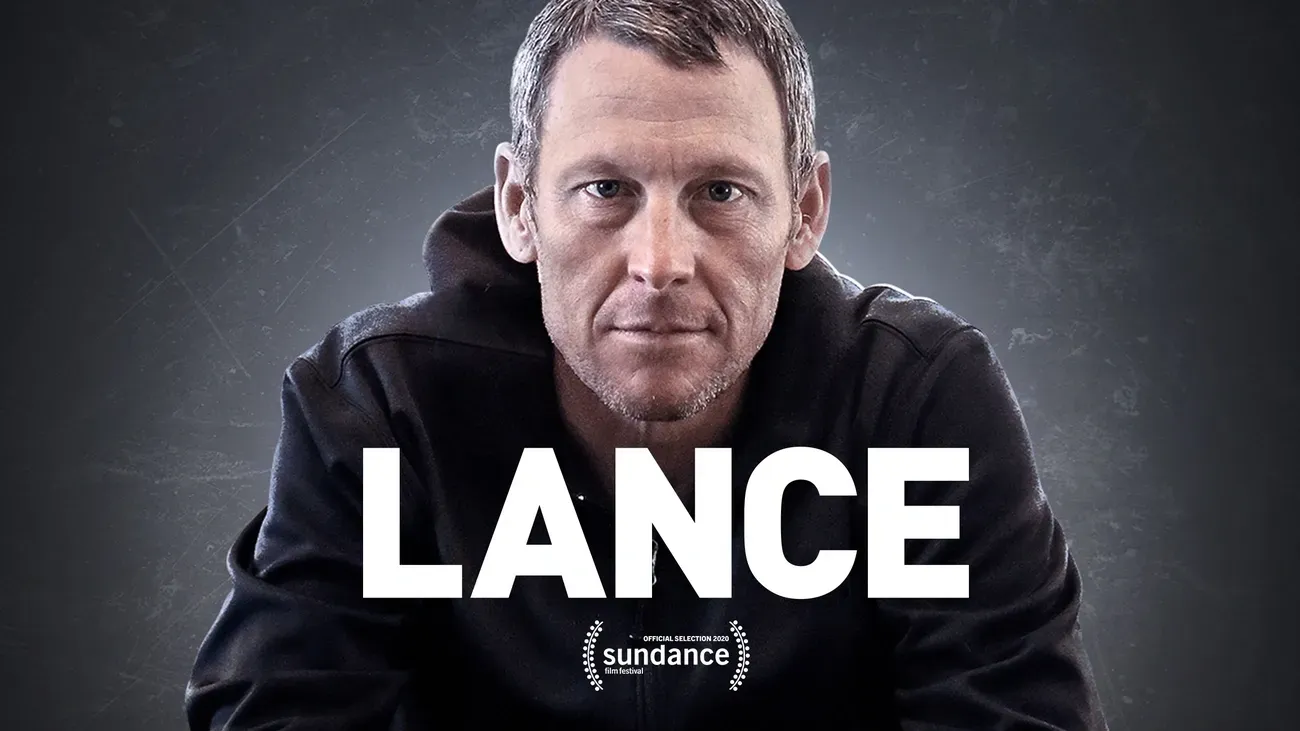
Image Source: IMDb
ESPN's two-part documentary Lance strips away the mythology surrounding cycling's most polarising figure. Released in May 2020, this unflinching portrait directed by Marina Zenovich doesn't just chronicle Lance Armstrong's rise and fall—it reveals the calculated machinery behind one of sport's greatest deceptions.
Overview of Lance
Built from eight extensive interviews with Armstrong conducted between March 2018 and August 2019, this four-hour examination captures something remarkable: the same combative intensity that powered seven Tour de France victories still burns within the man who lost everything. The documentary methodically traces his entire arc—from Texas childhood and early cycling breakthroughs through testicular cancer, systematic doping practices, and the eventual unravelling between 2010 and 2013.
Why Lance is a must-watch
This cycling doping documentary offers something rare: unfiltered access to Armstrong himself, revealing a man who remains defensive yet occasionally cracks open. Not just an individual's downfall—this is an entire sport's corruption laid bare. You'll notice how Armstrong predominantly uses "you" and "we" pronouns rather than "I," providing insight into his ongoing reluctance to fully own his actions. His frank discussions about doping—which he frames as "ingrained in the sport" before his arrival—offer an unprecedented window into cycling's darkest chapter.
Where to watch Lance
The documentary originally aired on ESPN on May 24 and May 31, 2020. Currently available on ESPN's streaming platform in most regions worldwide. ESPN offers a seven-day free trial before subscription costs apply.
Lance highlights
The film contains several revelations that hit hard: Armstrong's admission that he began doping at age 21 with cortisones in his first professional season, earlier than previously known. His discussions about working with notorious drug doctor Michele Ferrari from 1995 onward shed light on cycling's transition to what Armstrong calls "high octane rocket fuel".
The documentary's most genuine moment? When Armstrong discusses former rival Jan Ullrich's own drug-related downfall, displaying rare emotional vulnerability. What sets this apart from other Armstrong films is its ability to capture both his continued defiance and occasional glimpses of authentic remorse.
Not just the story of a fallen champion—the anatomy of how cycling's greatest fraud was built, defended, and ultimately exposed.
Iron Cowboy
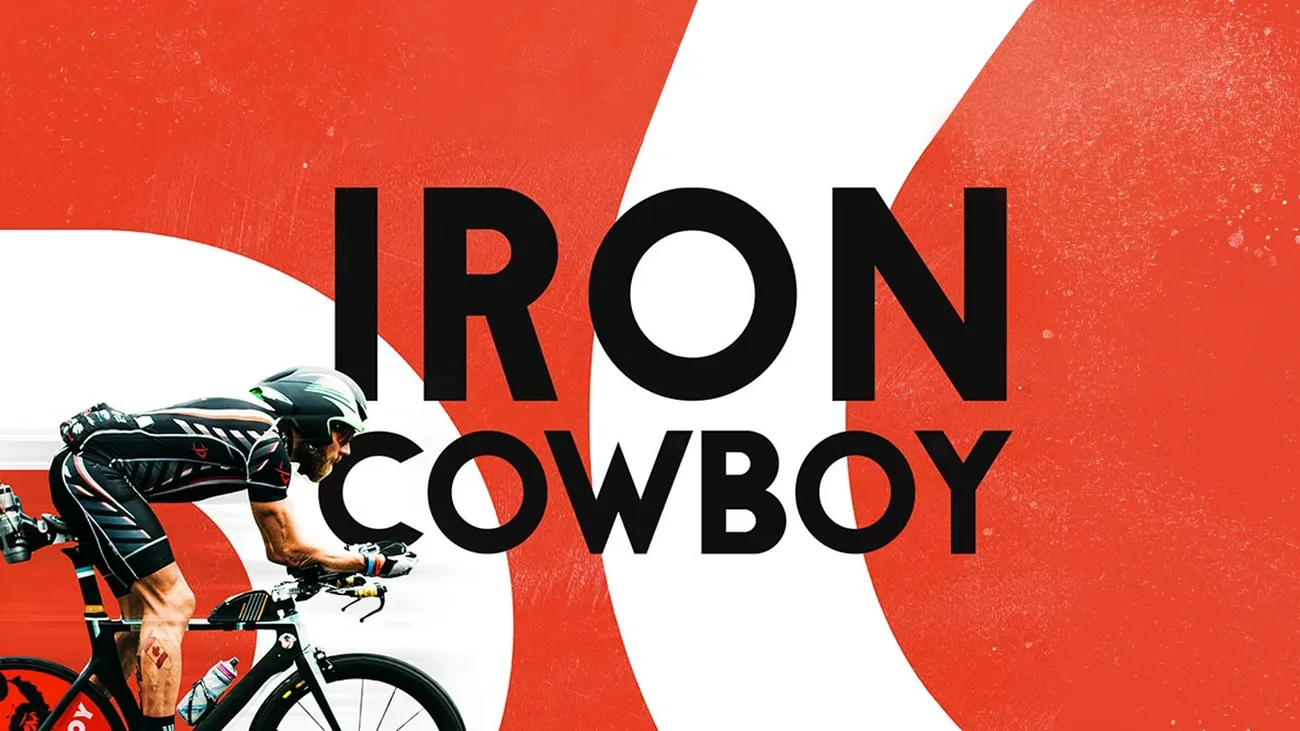
Image Source: Prime Video
You know that moment when your legs are screaming on a climb, and you wonder how much more you can take? Now imagine that feeling, multiplied by 50, across 50 consecutive days.
Iron Cowboy: The Story of the 50.50.50 follows James Lawrence's seemingly impossible quest to complete 50 full Ironman-distance triathlons across 50 consecutive days in all 50 US states. This remarkable film captures both the physical determination and mental fortitude required for an achievement many experts deemed unattainable.
Overview of Iron Cowboy
Lawrence's herculean journey pushes the boundaries of human endurance beyond anything most of us can imagine. Each day, he faced a gruelling 2.4-mile swim, 112-mile bike ride, and 26.2-mile marathon run. Nicknamed the "Iron Cowboy," Lawrence undertook this monumental challenge to raise awareness and funds for childhood obesity.
The film doesn't sugar-coat the reality. You'll witness his daily battles against tropical storms, internal bleeding, dehydration, and extreme sleep deprivation, averaging merely four to five hours of rest nightly.
Why Iron Cowboy is a must-watch
What separates this documentary from other endurance films is its raw portrayal of both triumph and suffering. The film doesn't merely showcase athletic achievement but delves into Lawrence's psychological journey toward redefining human limitations. His wife, Sunny, emerges as the unsung hero, performing "administrative miracles" while simultaneously caring for their five children.
The documentary captures how Lawrence's public challenge inspired countless others facing their own battles, transforming his personal quest into a movement of hope.
Where to watch Iron Cowboy
You can stream "Iron Cowboy: The Story of the 50.50.50" on multiple platforms. It's available for purchase or rental on Amazon Video and Apple TV. The documentary can also be streamed for free on Plex Player.
Iron Cowboy highlights
The documentary's most powerful moments include:
- Lawrence's unprecedented completion of the entire 50-50-50 challenge against overwhelming scepticism
- His candid struggles with falling asleep while cycling—sometimes in just three or four seconds—even with his heart rate above 100 bpm
- The community aspect of his journey, with crowds ranging from 10 to 2,000 people joining him for the final 5k of each marathon
- His massive daily caloric intake—approximately 3,500 calories every morning before riding and 7,000-8,000 calories total per day
Beyond the physical achievement, the film reveals how Lawrence's intentional suffering became a powerful catalyst for inspiring others to overcome their own limitations.
MAMIL
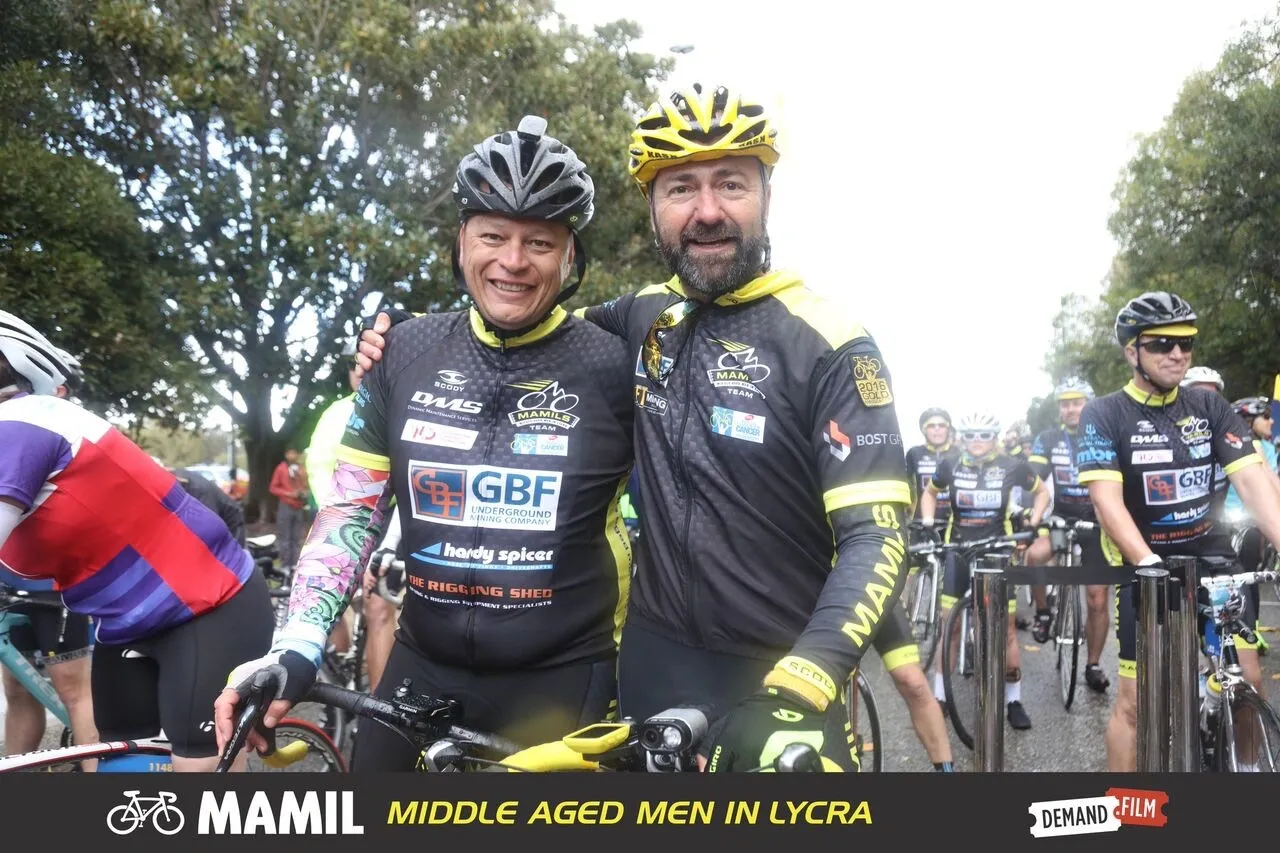
Image Source: IMDb
You know those weekend warriors in tight Lycra who gather at dawn for coffee shop rides? MAMIL (Middle-Aged Men In Lycra) goes beyond the obvious jokes to reveal something unexpected—genuine human connection on two wheels. This 104-minute documentary, released in 2017, captures why ordinary blokes across Australia, the United Kingdom, and the United States transform into lycra-clad weekend warriors.
Overview of MAMIL
Directed by Australian filmmakers Nickolas Bird and Eleanor Sharpe, MAMIL introduces viewers to diverse cycling groups including Adelaide's Fat Boys, Iowa's Altoona Road Riders, and the UK's MAMIL Sports. These white-collar professionals manage responsible jobs and mortgages during weekdays, yet transform on weekends into competitive road cyclists. Narrated by renowned Tour de France commentator Phil Liggett, the documentary explores why middle-aged men take to cycling with such passion, often spending thousands on equipment while donning tight-fitting attire that draws both curiosity and occasional ridicule.
Why MAMIL is a must-watch
What starts as a seemingly humorous exploration of an odd subculture evolves into something much deeper. Through intimate portraits, viewers witness how cycling helps men combat serious health challenges—from multiple sclerosis to obesity. Several stories highlight cycling's role in fighting depression and creating vital support networks among men who might otherwise struggle with isolation.
The documentary balances humour with genuine heart, ultimately showing that behind the tight Lycra beats the pulse of authentic human connection. It's a thoughtful examination of modern masculinity, friendship, and how men find community in middle age.
Where to watch MAMIL
Currently, you can stream MAMIL on multiple platforms. The documentary is available on Foxtel Now and DocPlay. You can purchase or rent it through Apple TV and Amazon Video. Some services, like Beamafilm, offer the film for free streaming.
MAMIL highlights
The documentary's most compelling moments include:
- Richard's inspiring journey using cycling to manage his multiple sclerosis
- The Los Angeles Eastside Bike Club's mission is to combat obesity in the Hispanic community
- Justin from the Fat Boys cycling team explaining how riding saved his mental health: "This is your moving meditation...cycling helped me get my life back into whack"
- Australian friends Franko and Craig's emotional story of cycling together to raise money for cancer after Franko's throat cancer diagnosis
The film proves that cycling creates communities where ordinary men find extraordinary support.
All for One
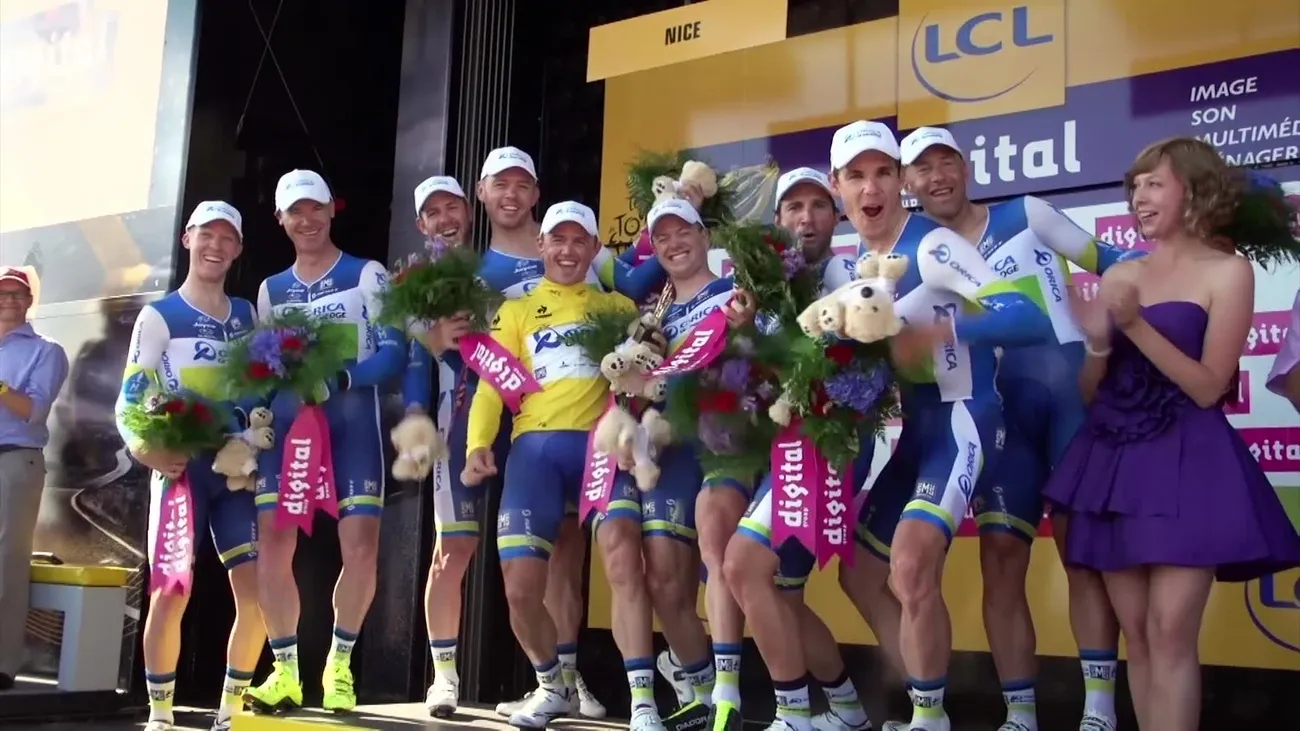
Image Source: IMDb
What happens when you combine Australian determination, cycling passion, and the dream of seeing your flag on team cars at the Tour de France?
All for One captures the remarkable five-year journey of GreenEDGE, Australia's first professional cycling team to compete in the Tour de France. This heartwarming documentary showcases both the competitive triumphs and human connections that defined this groundbreaking squad.
Overview of All for One
Released in 2017, this 103-minute documentary directed by Marcus Cobbledick and Dan Jones emerged from the popular "Backstage Pass" YouTube series that initially documented the team's progress. The story begins in 2010 when Australian businessman Gerry Ryan noticed the absence of Australian flags on team cars during the Tour de France. Instead of simply recruiting famous cyclists, Ryan assembled a group of primarily Australian athletes focused on working together as a cohesive unit. Throughout the film, viewers witness GreenEDGE's evolution from its Australian roots to a more cosmopolitan lineup.
Why All for One is a must-watch
The documentary's heart lies in two compelling narratives that unfold simultaneously. First, Colombian climber Esteban Chaves' recovery from a catastrophic accident, where nine out of ten doctors believed he might never walk again. Second, veteran Australian rider Matthew Hayman's determination to compete after breaking his arm shortly before Paris-Roubaix.
Beyond their individual journeys, the film showcases their evolving relationship, with Hayman becoming "sort of a second father" to young Chaves. While many cycling films focus solely on competition, this documentary balances thrilling race footage with genuine human emotion, creating what one reviewer called "an emotional rollercoaster".
Where to watch All for One
Currently, you can stream the documentary on several platforms. It's available on Amazon Prime Video, fuboTV, and for free with ads on Amazon Prime Video Free. You can also rent or purchase it through Apple TV and Fandango At Home. For those with library access, Kanopy offers the film free of charge.
All for One highlights
The film features remarkable cycling footage, including exhilarating helmet-cam views that put viewers directly into the peloton. Since the documentary covers five years of racing, viewers witness significant milestones in the team's development, from early victories to established success.
Alongside intense competition, the film captures the team's famous humour and "larrikin-nature" that made their YouTube channel so popular. Perhaps most impressive is the documentary's ability to convey both triumph and sacrifice while maintaining what one reviewer called "pure entertainment from beginning to end".
What will your GreenEDGE moment be?
Icarus
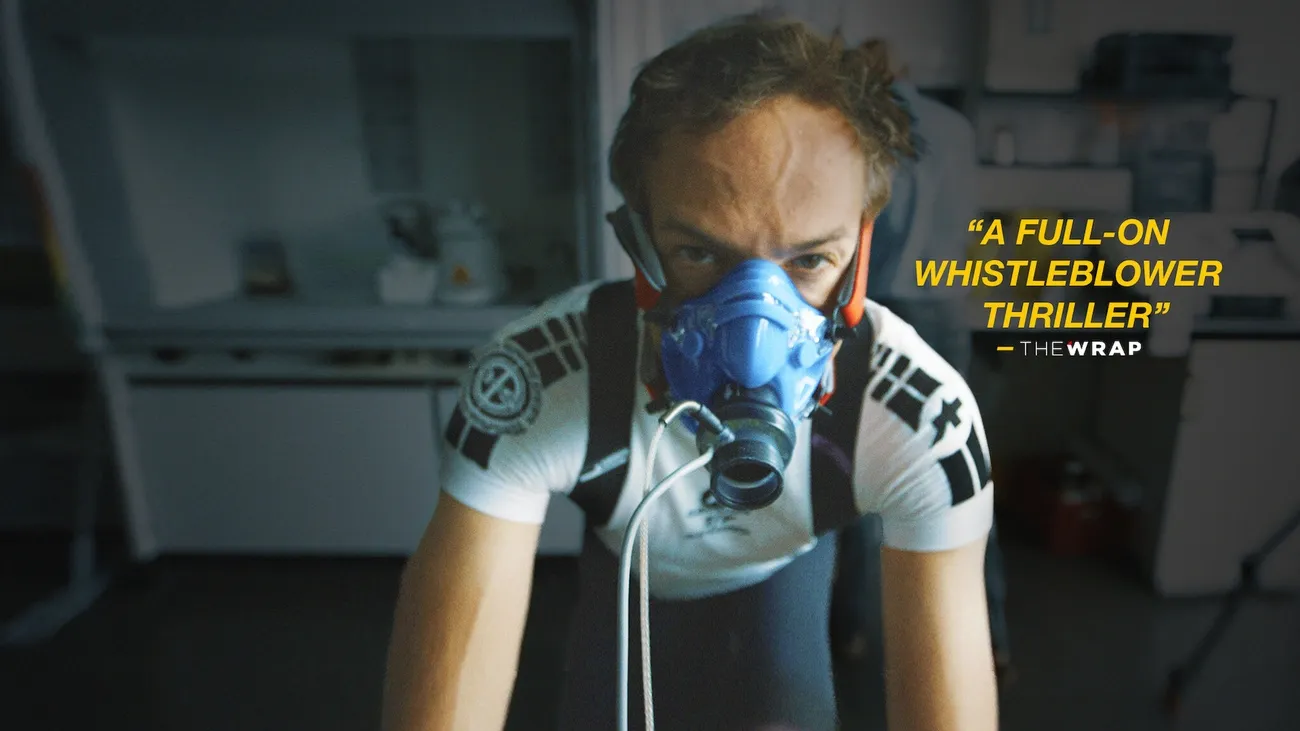
Image Source: Netflix
You know that moment when you're watching a cycling documentary and suddenly realise you're witnessing something much bigger than sport?
Bryan Fogel's Oscar-winning documentary Icarus started as a simple amateur cycling experiment and became one of the most explosive revelations in Olympic history. Released in 2017, this riveting film transformed from personal doping curiosity into a game-changing exposé of Russia's state-sponsored corruption.
Overview of Icarus
Originally, Fogel set out to create a documentary about doping in cycling by becoming a "guinea pig" himself. As an avid amateur cyclist, he planned to use performance-enhancing drugs while preparing for the Haute Route, considered one of the toughest cycling races globally. To guide his experiment, Fogel connected with Grigory Rodchenkov, the director of Moscow's anti-doping laboratory.
Then everything changed.
Midway through filming, Rodchenkov became implicated in a World Anti-Doping Agency report linking him to state-sponsored doping efforts in Russia. Subsequently, Rodchenkov fled to America with Fogel's help, bringing hard drives containing evidence of a massive Russian doping conspiracy.
Why Icarus is a must-watch
Beyond its 92% rating, Icarus captivates viewers through its transformation from personal experiment to international thriller. The documentary explains how Russia implemented an elaborate "Ocean's Eleven-style scheme" during the 2014 Sochi Olympics, where they replaced tainted urine samples with clean ones through holes in laboratory walls.
Rodchenkov's testimony revealed that Russia's doping program reached the highest levels of government. Throughout the film, viewers witness genuine fear as mysterious deaths of other Russian anti-doping officials occur.
What started as a cycling curiosity became a whistleblower's desperate flight to safety.
Where to watch Icarus
Currently, you can stream Icarus exclusively on Netflix, including Netflix Standard with Ads. Subscription options range from €6.99/month (Standard with ads) to €19.99/month (Premium).
Icarus highlights
The documentary's most compelling elements include:
- Fogel's unexpected bond with Rodchenkov, whose larger-than-life personality regularly quoting George Orwell, provides both comic relief and emotional depth
- The shocking revelation that Russia's state-sponsored program affected numerous Olympics, with claims that 30 of 73 medals in Beijing and about 50% of the 81 medals in London were tainted
- Director Fogel's acceptance speech at the Academy Awards, dedicating the Oscar to "fearless whistleblower" Rodchenkov, who now lives in great danger.
- The film's transformation from what Fogel called "almost an absurdist comedy" to what critics described as a "crackling documentary" with qualities of a thriller
Tour de Pharmacy
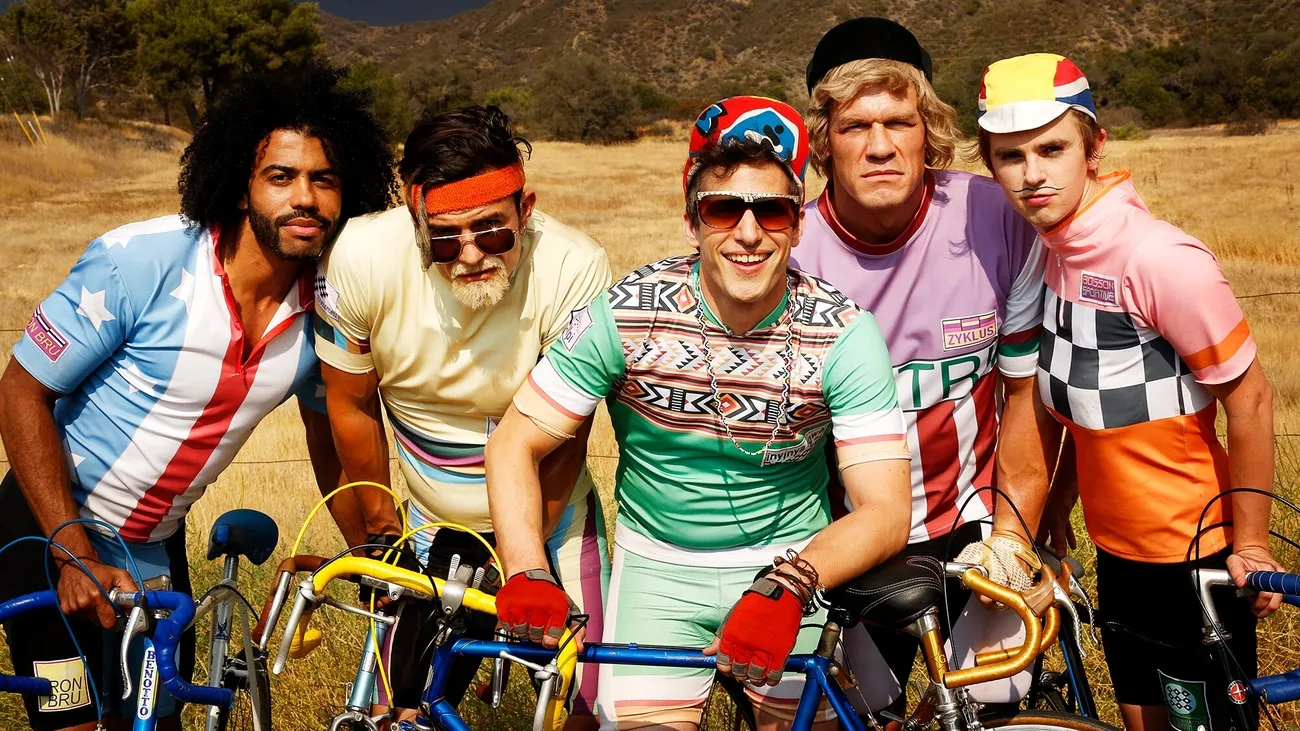
Image Source: Crave
What happens when Hollywood takes on cycling's doping scandals? You get pure, gleeful mayhem.
This satirical HBO mockumentary Tour de Pharmacy flips the script on cycling documentaries, delivering a star-studded comedy that fearlessly lampoons the sport's notorious doping culture. Released on July 8, 2017, this 40-minute film represents a hilarious yet pointed critique of performance-enhancing drug use in professional cycling.
Overview of Tour de Pharmacy
Directed by Jake Szymanski and starring Andy Samberg, Orlando Bloom, Freddie Highmore, Daveed Diggs, and John Cena, this fictional tale follows the 1982 Tour de France, where virtually all competitors were disqualified for doping. The plot centres on five remaining cyclists dubbed "The Fab Five": Samberg's Nigerian-representing American Marty Hass, Bloom's drug-addled Italian JuJu Peppi, Diggs' pioneering Black cyclist Slim Robinson, Cena's suspiciously muscular German Gustav Ditters, and Highmore's gender-disguising French rider Adrian Baton. To maintain authentic 80s aesthetics, much of the race footage was cleverly shot using vintage Betamax cameras.
Why Tour de Pharmacy is a must-watch
The mockumentary earned impressive reviews, holding a 90% approval rating on Rotten Tomatoes with a 7.5/10 average score. Critics praised how it transforms "the thorny subject of doping in professional cycling into pure, gleeful mayhem".
What sets this film apart is its fearless absurdity, featuring everything from animated red blood cell segments to bizarre Finnish credit card commercials. While other cycling documentaries explore the serious side of doping scandals, Tour de Pharmacy tackles the same subject through outrageous comedy. The film's satirical approach offers both entertainment and commentary on a serious sporting issue.
Where to watch Tour de Pharmacy
Currently, you can stream the film on Max and the HBO Max Amazon Channel. For those without subscriptions, it's available for purchase or rental through Amazon Video, Apple TV, Fandango At Home, and Microsoft Store.
Tour de Pharmacy highlights
The mockumentary features an incredible array of cameos, including Lance Armstrong appearing in a poorly disguised silhouette to joke about his own doping scandal. Other surprising appearances include Kevin Bacon as a corrupt Finnish anti-doping official, James Marsden as a persistent BBC reporter, plus Jeff Goldblum, Danny Glover, and Mike Tyson as talking heads. The film's outrageous humour extends to full-frontal male nudity and increasingly absurd attempts to maintain the documentary format.
Sometimes the best way to understand cycling's complexities is through laughter.
Personal Gold
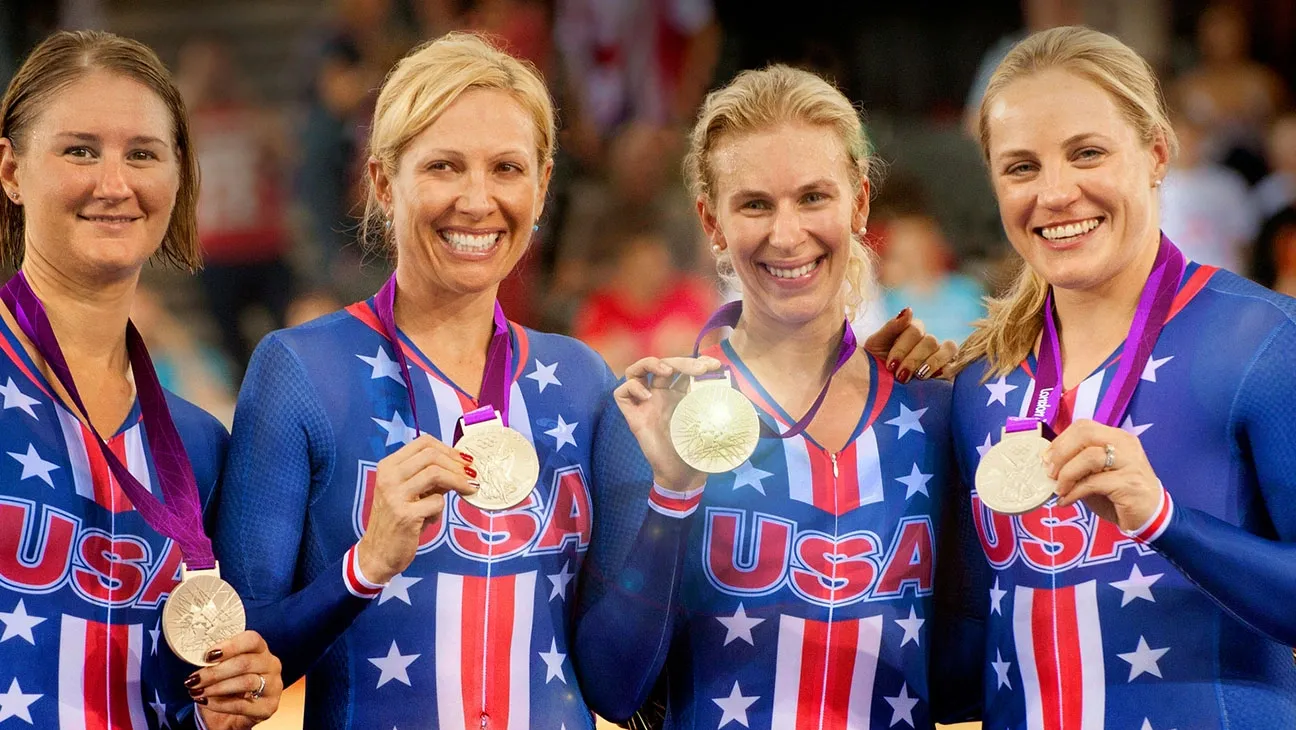
Image Source: The Hollywood Reporter
Sometimes the most powerful cycling stories aren't about who wins. They're about those who refuse to give up.
"Personal Gold" chronicles the remarkable journey of four determined women who became America's medal hope at the 2012 London Olympics after the men's team was banned during the Lance Armstrong doping scandal. This underdog story showcases how data-driven training transformed underfunded athletes into Olympic medalists.
Overview of Personal Gold
Released in 2016, this 89-minute documentary follows the scrappy U.S. women's track cycling team—Dotsie Bausch, Sarah Hammer, Jennie Reed, and Lauren Tamayo—as they prepare for the 2012 London Olympics. Directed by Tamara Christopherson, the film reveals how the team trained in Mallorca, Spain, chosen specifically for its low cost and proximity to London.
Facing the challenge of making up "5 or 6 seconds in six months", these athletes embraced an alternative approach summarised by their motto: "Data, not doping".
Why Personal Gold is a must-watch
While cycling's headlines focused on scandals, these women quietly proved there's another way forward. The film provides fascinating insight into how Sky Christopherson, a former Olympic cyclist turned entrepreneur, created a virtual team of volunteer advisors, including experts in biology, genetics, sleep, data analytics, and even a former Navy SEAL who provided guidance on teamwork.
What makes this documentary compelling is how it captures authentic athletic achievement. One reviewer described it as "one of the best underdog movies since Rocky". Not because of the medals they won, but because of how they chose to win them.
Where to watch Personal Gold
Currently, you can purchase or rent "Personal Gold: An Underdog Story" on several platforms, including Amazon Video, Apple TV, and Fandango At Home. For those with library access, the documentary is available to stream for free on Kanopy.
Personal Gold highlights
The film's most compelling moments include:
- The team's unexpected second-place finish in qualifying despite their relatively weak 3:19.4 time
- Their ultimate achievement of winning silver medals—considered "gold to us" given their circumstances
- The innovative use of headbands to monitor sleep cycles, allowing bedrooms to be redesigned for more biologically productive downtime
- Their final time of 3 minutes 16.85 seconds, a performance they "could only imagine when they got on the plane to London"
Through their journey, these athletes demonstrated that "there's a better way forward... and it does not include performance enhancing drugs".
Stop at Nothing
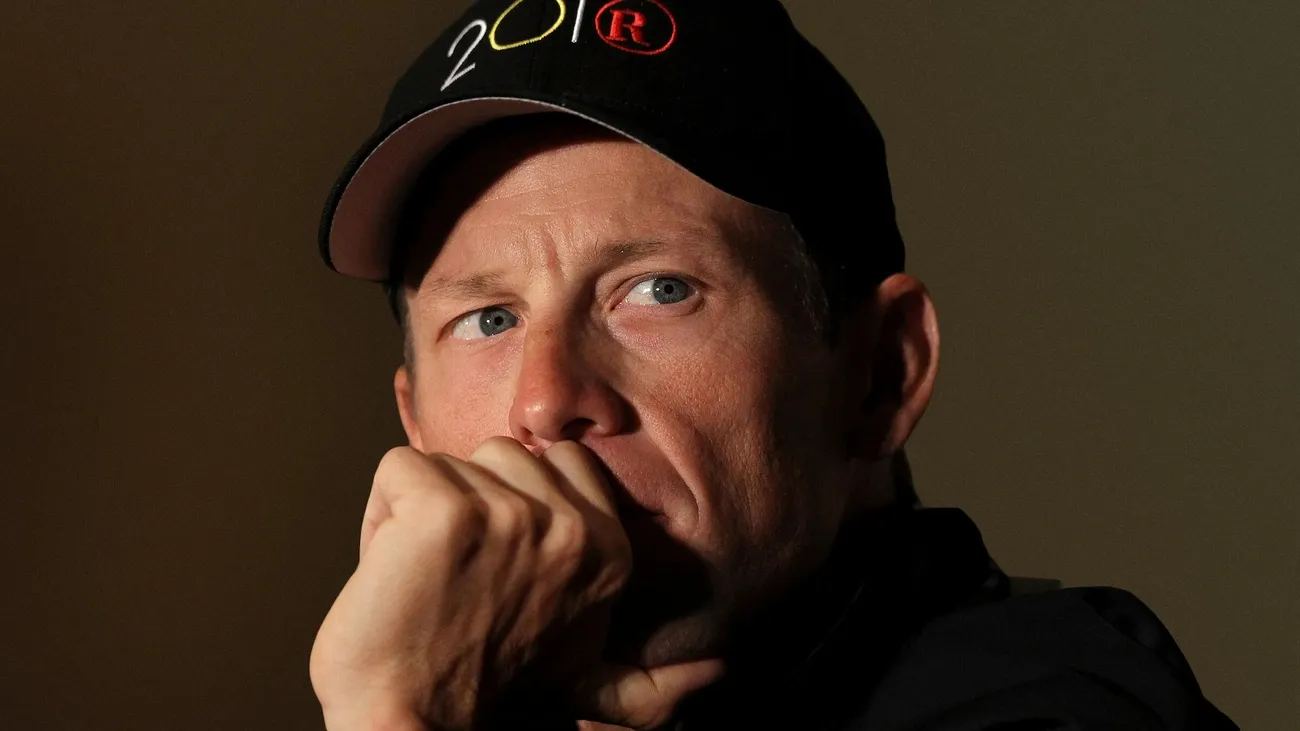
Image Source: Netflix
You know how cycling fans desperately wanted to believe in heroes? How we cheered every victory, defended every accusation, and celebrated what we thought was the greatest comeback story in sports?
Stop at Nothing: The Lance Armstrong Story strips away that illusion with surgical precision. This fearless 2014 Australian documentary doesn't just expose cycling's most notorious figure—it reveals how an entire sport became complicit in what Variety called "the greatest fraud in the history of sport".
Overview of Stop at Nothing
Director Alex Holmes crafts this 104-minute exposé around Armstrong's own words, using depositions and press conferences to demonstrate the vehemence with which he denied allegations before eventually confessing. What makes this documentary particularly compelling is its focus on the human cost, not just Armstrong's transgressions, but the lives he destroyed along the way.
Holmes portrays Armstrong as someone who "enriched himself by cheating his fans, his sport, and the truth". The documentary creates a gripping combination of near-mythic hubris and collective hero worship, showing how cycling's hunger for legends made us all vulnerable to deception.
Why Stop at Nothing is a must-watch
With an impressive 86% rating on Rotten Tomatoes, many reviewers consider this the definitive Armstrong documentary. While Alex Gibney's "The Armstrong Lie" did a respectable job, one viewer noted it "felt as though Gibney was intimidated by Lance".
Stop at Nothing takes the opposite approach.
The documentary fearlessly exposes Armstrong's ruthless methods of intimidating accusers, paced and scored with the urgency of a thriller. It captures both Armstrong's calculated deception and the public's desperate hunger for athletic heroes—a combination that nearly destroyed professional cycling.
Where to watch Stop at Nothing
Currently, this cycling documentary is accessible on multiple streaming platforms. You can watch it on:
- Netflix
- Amazon Prime Video
- The Roku Channel (free with ads)
- Pluto TV (free)
For those preferring rental options, it's available on Amazon Video and Fandango At Home.
Stop at Nothing highlights
The film's most powerful moments focus on the victims:
- Former teammates and friends turned whistleblowers, particularly Frankie and Betsy Andreu, who stood their moral ground
- Armstrong's dramatic fall from being lionised by David Letterman to becoming Top 10 List fodder
- His public confession to Oprah Winfrey after years of aggressive denials
- The documentary's exploration of how Armstrong believed in his own invulnerability
What emerges is a portrait of a man who didn't just cheat—he systematically destroyed anyone who threatened to expose the truth.
Thereabouts
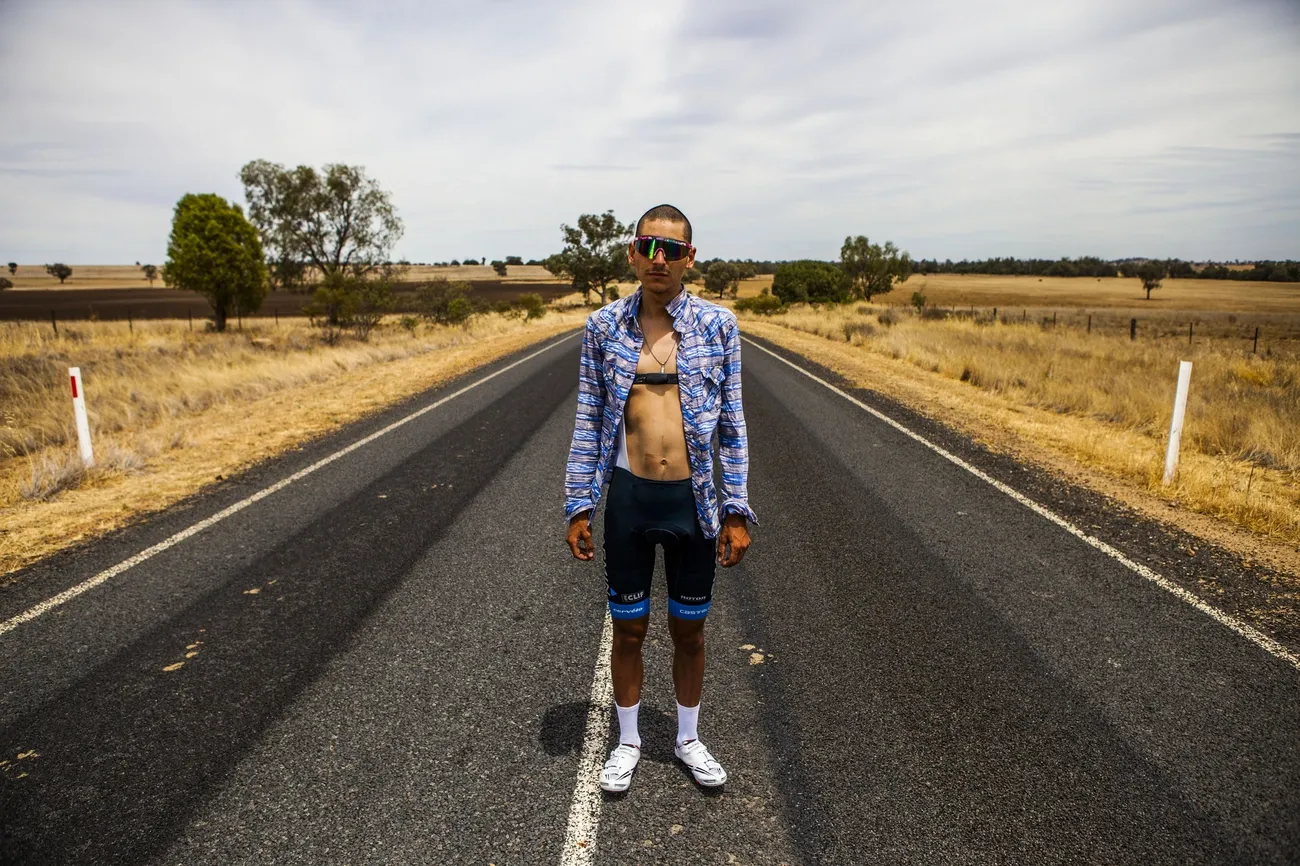
Image Source: IMDb
Sometimes the best cycling stories happen when you strip away everything—the pressure, the podiums, the politics—and just pedal.
Thereabouts captures that raw essence as two brothers rediscover their love for cycling during a gruelling 2,000-kilometre ride across the Australian outback.
Overview of Thereabouts
Essentially a labour of love with an estimated budget of just AUD 5,000, this 49-minute film follows professional cyclist Lachlan Morton and his brother Gus as they pedal from their hometown of Port Macquarie through one of Earth's harshest landscapes to Uluru at Australia's centre. Released in December 2014, the documentary earned a respectable 7.4/10 IMDb rating and later expanded into a series, with subsequent films exploring Colombia and other locations.
At its core, the film examines how professional cycling had "almost destroyed" one brother while leaving the other "burnt out". You know that feeling when something you love becomes a burden? That's exactly where these brothers found themselves before embarking on this journey.
Why Thereabouts is a must-watch
What distinguishes this cycling documentary is its focus on rekindling joy rather than competition. Unlike productions centred on races and results, Thereabouts explores how two talented riders reconnect with cycling's fundamental pleasures after experiencing the sport's crushing pressures.
The film provides genuine insight into how "turning professional annihilated their love of cycling" while documenting their attempt to rediscover what initially drew them to riding. Shot without artificial constraints, the documentary captures authentic interactions between the brothers as they process their complicated relationship with the sport.
The Australian outback becomes more than just scenery—it's a character that forces honest conversations about cycling, life, and finding your way back to what matters.
Where to watch Thereabouts
The documentary is available to stream or purchase online, with the official film series website offering access options.
Thereabouts highlights
The film showcases:
- The brothers' candid discussions about how professional cycling made them "learn to hate something they both loved"
- Lachlan's description of cycling as meditation: "I'm not a religious person but it's like meditation for me"
- Beautiful footage of the Australian outback that reveals "how special Australia is"
- Interactions with local communities that demonstrate cycling's power to connect people across vast distances
Through their journey, you'll witness cycling return to its purest form—not about winning, but about moving forward, one pedal stroke at a time.
Pantani: The Accidental Death of a Cyclist
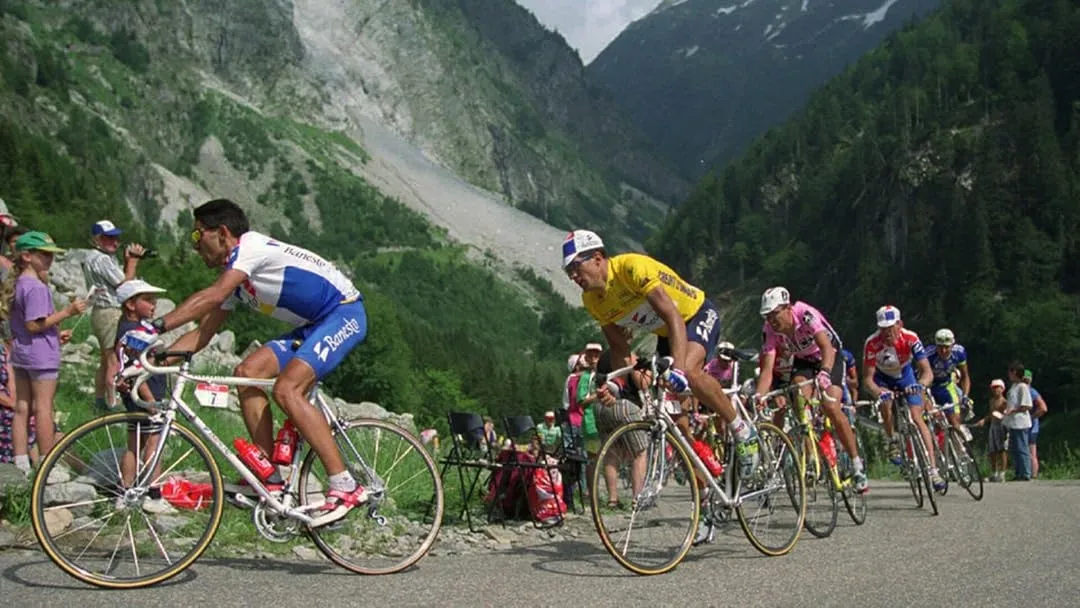
Image Source: Prime Video
Some cycling stories end with champagne on the podium. Others end in tragedy.
James Erskine's 2014 feature-length documentary Pantani: The Accidental Death of a Cyclist examines the dramatic rise and fall of Italy's beloved cycling champion, whose talent on mountain stages was matched only by his tragic personal descent. This 92-minute film chronicles Marco Pantani's extraordinary journey from cycling hero to isolated figure battling addiction.
Overview of Pantani
The documentary meticulously follows Pantani's career trajectory, culminating in his historic 1998 achievement of winning both the Tour de France and Giro d'Italia—an extraordinary feat of endurance never repeated since. Through archival race footage coupled with interviews, the film portrays Pantani as part of cycling's long tradition of mythical climbers who attack whenever the road goes upward. Significantly, the narrative explores how doping allegations effectively ended his career, sending him into a downward spiral that ultimately resulted in his death from cocaine poisoning in 2004.
Why Pantani is a must-watch
This cycling documentary holds an impressive 84% approval rating on Rotten Tomatoes, with critics praising its "thrilling footage" and emotional depth. The film successfully balances showcasing the beauty of cycling alongside telling Pantani's tragic personal story. What makes this documentary essential viewing is how it captures both sides of Pantani—the rider and the man—providing insight into his immense popularity in Italian society. Viewers appreciate how the film depicts racing scenes more effectively than written accounts ever could.
Where to watch Pantani
Currently, the documentary is available on Netflix, rated 13+ and categorised under biographical documentaries and sports films. As an alternative, "The Natural: Marco Pantani"—a newer 2021 documentary—can be found on Apple TV and YouTube (available for purchase or rental).
Pantani highlights
The documentary's most compelling segments include footage of Pantani's famous mountain accelerations, particularly his victory on the stage to Les Deux Alpes in the 1998 Tour de France. The film effectively captures the beauty of cycling's climbers through Pantani's riding style.
Equally moving are the interviews with family and friends who provide personal context to his story. The documentary neither completely condemns nor exonerates Pantani regarding doping allegations—instead presenting the complex reality of cycling during the EPO era of the 1990s-2000s.
It's a reminder that behind every cycling legend lies a human story. Sometimes beautiful, sometimes tragic, always real.
Bradley Wiggins: A Year in Yellow
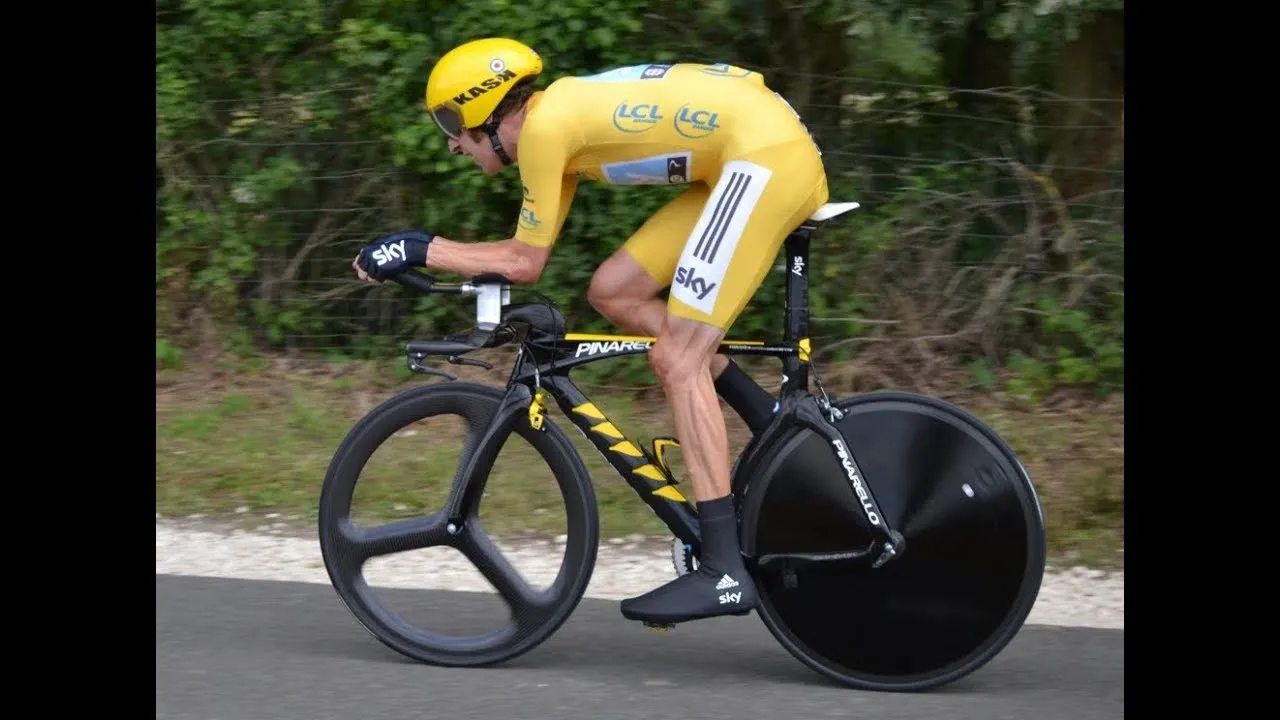
Image Source: YouTube
You know that feeling when everything clicks perfectly in cycling? When months of training, sacrifice, and pure determination culminate in that one defining moment?
John Dower's intimate documentary Bradley Wiggins: A Year in Yellow captures exactly that—the historic 2012 season when Wiggins became the first British rider to win cycling's most prestigious race. This compelling film chronicles not merely his sporting triumph, but also his complex character behind the public persona.
Overview of Bradley Wiggins: A Year in Yellow
This one-hour documentary follows Wiggins through his remarkable 2012 campaign, beginning with victories at Paris-Nice and Tour de Romandie before winning the Critérium du Dauphiné. The narrative builds toward his crowning achievement—becoming the first British Tour de France champion—followed just days later by Olympic gold in London.
Produced for Sky Atlantic, the film earned both BAFTA and Grierson nominations, offering unprecedented access to Wiggins during this pivotal year.
Why Bradley Wiggins: A Year in Yellow is a must-watch
You know how some athletes seem robotic in interviews? Wiggins shatters that completely.
This film unveils Wiggins as surprisingly "warm, candid and vulnerable", contradicting his mechanical public image. His wife provides fascinating insight, describing him as two distinct people: "My husband is brilliant—he's proper good, patient, kind. Then there's the cyclist. He's a bit of a twat".
The documentary reveals the psychological complexity behind his achievements—how professional demands clash with personal life, the weight of carrying British cycling's hopes, and the internal battles that fuel champions.
Where to watch Bradley Wiggins: A Year in Yellow
Currently, this cycling documentary can be streamed on Vimeo. Fortunately, many viewers can find a free version on YouTube, making it more accessible than many premium cycling documentaries.
Bradley Wiggins: A Year in Yellow highlights
The documentary's most compelling moments include Wiggins describing his final time trial that secured Tour victory—an almost out-of-body experience filled with childhood memories: "I remember getting to the point when I knew I'd won the Tour. I was filled with flashbacks...cycling in Regent's Park with my grandparents".
Viewers also gain insight into Wiggins' complicated relationship with his absent father, whose jealousy paradoxically drove his son's ambition. The film captures his famous personality—including his perfect French, wry smile, and irreverent humour, as when he declares after winning: "I'm going home and having coffee from my own machine, and I'm going to walk naked round the house, I don't care who's filming".
That's pure Wiggins—brilliant, complex, and utterly human.
The Flying Scotsman
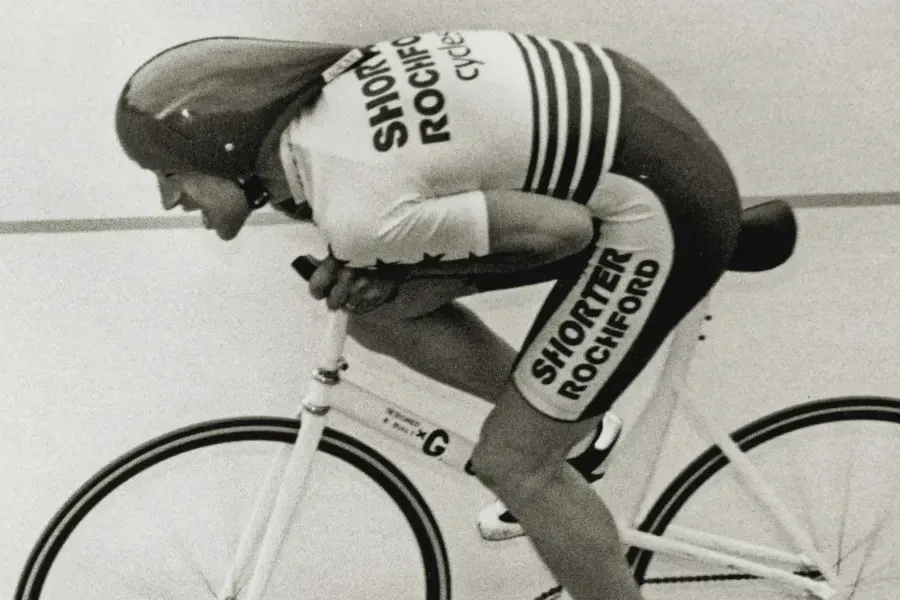
Image Source: We Love Cycling
What happens when a cycling genius builds a world-record bike from washing machine parts?
The Flying Scotsman tells the extraordinary story of Graeme Obree, a Scottish cyclist who refused to accept limitations—whether imposed by his equipment budget or his own mind. This 2006 British biographical drama stands apart for its raw portrayal of how athletic brilliance and mental health struggles often walk hand in hand.
Overview of The Flying Scotsman
This biographical drama chronicles Obree's extraordinary journey to break the world one-hour distance record on a bicycle built from washing machine parts. Jonny Lee Miller delivers a powerful performance as Obree, supported by Laura Fraser, Billy Boyd, and Brian Cox. Filmed primarily in Galston, Scotland, with locations in Glasgow and German velodromes standing in for international settings, the 103-minute film follows Obree's record-breaking achievement, subsequent loss, and triumphant reclaiming of the title.
Why The Flying Scotsman is a must-watch
Not just another sports film—this one digs into the psychological cost of pushing boundaries. Miller's "enormously sympathetic and appealing" portrayal earned the film a solid 7.0/10 rating on IMDb from over 6,100 viewers.
The film tackles serious mental health issues head-on, potentially helping "highlight the issues associated with mental illness". Obree's story demonstrates how those with challenging childhoods can achieve greatness despite numerous setbacks—a message that resonates far beyond cycling.
Where to watch The Flying Scotsman
You can stream this cycling story on:
- Amazon Prime Video (including free with ads)
- The Roku Channel (free with ads)
Additionally, it's available for rental or purchase on Apple TV.
The Flying Scotsman highlights
The film excels at portraying Obree's innovative spirit, designing a revolutionary bicycle from scrap parts. Generally considered an underdog story in the vein of "Cinderella Man," it shows how Obree's keen observations and experimentation led to groundbreaking cycling techniques.
The narrative balances athletic achievement with personal struggles, showing how Obree's supportive network—including his wife Anne, manager Malky, and adviser Douglas—helped him navigate life's challenges. The film offers both sporting inspiration and emotional depth, proving that sometimes the greatest victories occur within one's own mind.
Conclusion
These 18 cycling documentaries take you places traditional race coverage never could. Beyond the finish line celebrations and podium ceremonies, you've glimpsed the human stories that make cycling compelling—Cavendish's battle with depression, Bartali's wartime heroism, the Morton brothers rediscovering their love for riding.
You know that feeling when you watch a race and wonder what's happening behind the scenes? These films answer those questions. They reveal the psychological battles, the team dynamics, the personal sacrifices that exist beneath the surface of professional cycling, from Movistar's internal civil war to Armstrong's calculated deception, from middle-aged men finding community in Lycra to pioneers like GreenEDGE breaking new ground.
What makes these documentaries special isn't just their cycling content—it's how they capture the sport's ability to reveal character. Whether it's Conway's obsessive pursuit of a record across Europe or Pantani's tragic descent from mountain king to isolated figure, these stories show cycling as both salvation and struggle.
The variety ensures every cycling fan finds something that resonates. Serious investigations, such as "Icarus," expose systemic corruption. Comedic takes like "Tour de Pharmacy" lampoon the sport's scandals. Intimate portraits, such as "A Year in Yellow," portray champions as complex human beings rather than racing machines.
These documentaries preserve moments that might otherwise disappear—the sound of carbon wheels on tarmac, the tension in team cars during crucial stages, the raw emotion of breakthrough victories. While finding quality cycling content has become challenging since services like GCN+ disappeared, Netflix and Amazon continue providing access to these compelling stories.
Tracking down specific documentaries might require some effort as streaming services evolve. The rewards justify the search. Whether you're a dedicated cycling enthusiast or appreciate powerful human stories, these 18 documentaries offer remarkable journeys worth experiencing.
What will your next cycling story be?


